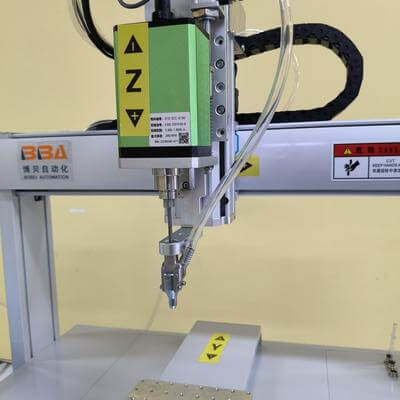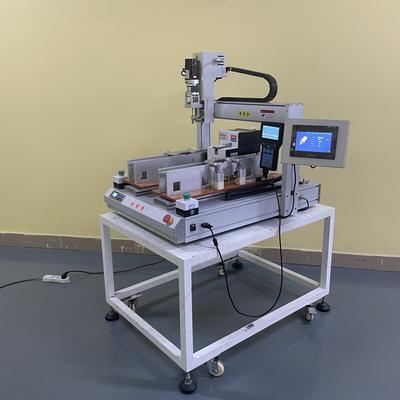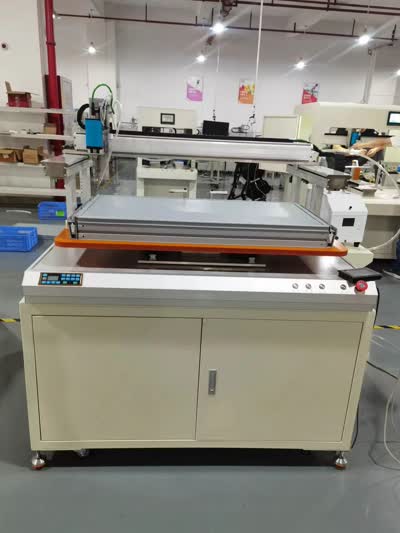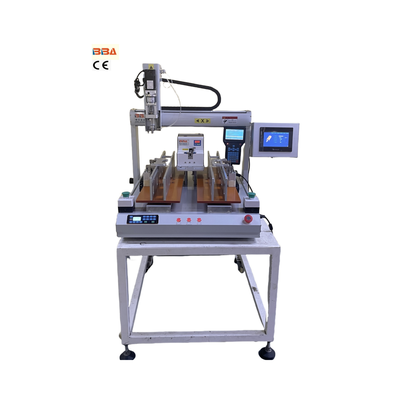Collaborative Robots for Flexible Fastening Tasks | Industrial Automation
Collaborative Robots for Flexible Fastening Tasks
In today's rapidly evolving industrial landscape, the demand for automation solutions that combine precision, flexibility, and safety has never been greater. One area where this is particularly evident is in fastening tasks—a critical process in assembly lines across various industries. Traditional automation systems often struggle with the variability and complexity inherent in these tasks, but collaborative robots (cobots) are changing the game.
Collaborative robots are designed to work alongside human operators, enhancing productivity without compromising safety. Unlike conventional industrial robots, which typically operate in segregated areas, cobots can share workspace with humans thanks to advanced sensors and safety features. This makes them ideal for fastening applications where human oversight and adaptability are still essential.
Why Fastening Tasks Benefit from Cobots
Fastening operations, such as screwing, bolting, and riveting, require a high degree of accuracy and repeatability. However, they also often involve variations in part placement, torque requirements, and sequence complexity. Collaborative robots excel in these environments because they can be easily programmed and reprogrammed to adapt to new tasks or product variations. With intuitive programming interfaces, even operators without extensive robotics experience can teach cobots new fastening patterns or adjust existing ones quickly.
Moreover, cobots can handle a wide range of fastening tools, from electric screwdrivers to pneumatic torque wrenches. Their ability to integrate with vision systems and force-torque sensors allows them to compensate for misalignments, apply consistent torque, and verify each fastening operation in real-time. This results in higher quality assemblies and reduced error rates.
Enhancing Flexibility and Efficiency
One of the standout features of collaborative robots is their flexibility. In manufacturing settings where product lifecycles are shortening and customizations are increasing, the ability to quickly redeploy automation assets is invaluable. Cobots can be moved between workstations or repurposed for different fastening tasks with minimal downtime. This flexibility not only improves operational efficiency but also provides a faster return on investment compared to fixed automation systems.
Additionally, cobots can operate continuously without fatigue, maintaining consistent performance throughout extended shifts. When combined with human operators who handle more complex decision-making and exception handling, the overall system becomes highly efficient and resilient.
Safety and Ergonomics
Safety is a paramount concern in any industrial environment. Collaborative robots are built with inherent safety features such as force limiting, collision detection, and protective stops. These features ensure that cobots can operate safely in close proximity to human workers. In fastening tasks, which often involve repetitive motions and potentially ergonomic risks, cobots can take over the strenuous aspects of the job, reducing the likelihood of work-related injuries and improving overall workplace ergonomics.
For instance, in overhead fastening operations or tasks requiring precise torque application, cobots can perform consistently without strain, while human workers focus on supervision and quality checks.
Future Outlook
The adoption of collaborative robots in fastening and other assembly tasks is expected to grow significantly in the coming years. Advances in artificial intelligence, machine learning, and sensor technology will further enhance the capabilities of cobots, enabling them to handle even more complex and unpredictable scenarios. As industries continue to prioritize agility and efficiency, collaborative robots will play an increasingly vital role in modern manufacturing ecosystems.
In conclusion, collaborative robots offer a compelling solution for flexible fastening tasks, combining the strengths of automation with the adaptability of human workers. By improving precision, flexibility, safety, and ergonomics, cobots are helping businesses meet the challenges of today's dynamic market demands.
| Product Name | Applicable industries |
| Smart Screw Driving Machine | LED Lighting Industry |



